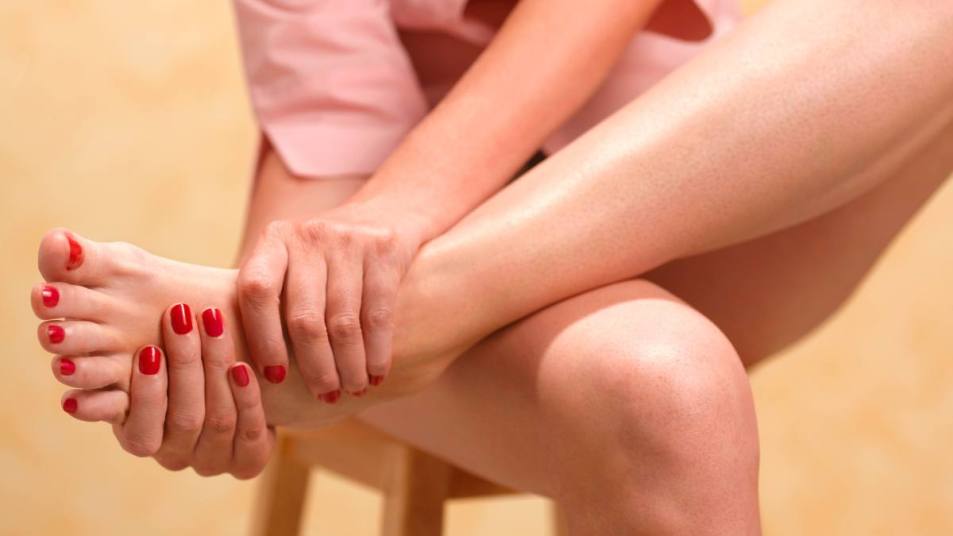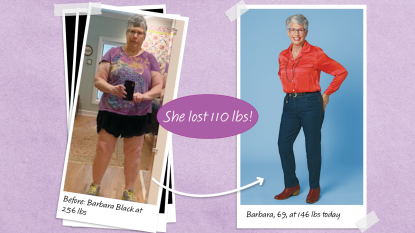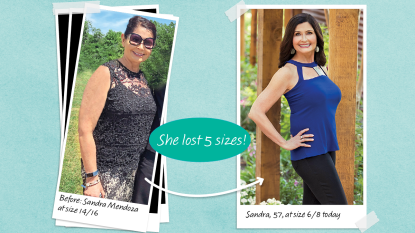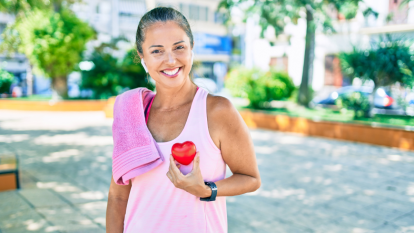7 Doctor-Recommended Bunion Exercises to Ease Pain & Prevent Them From Growing
Plus, what to look for in a bunion-friendly shoe.

If you’ve ever had a bunion, you know how painful these swollen, bony bumps can be. Ice and over-the-counter pain medication help relieve inflammation and swelling, but without taking preventive actions, the problem tends to worsen over time. You’ve likely heard that wearing shoes with a wide toe box helps, but so can bunion exercises. Here, we explain how bunion exercises relieve pain and prevent bunion progression and highlight several expert-recommended bunion exercises.
What are bunions?

Bunions are hard, bony bumps that form on the outside of your big toe. They occur when the bones in your forefoot change position, causing your big toe joint (metatarsophalangeal joint) to bulge outward. Bunions affect people of all ages and backgrounds, but they’re most common in women 65 and older. In fact, more than 35% of women in this age group have bunions, according to the Journal of Foot and Ankle Research.
Christynne Helfrich, PT, DPT, OCS, a City University of New York-trained doctor of physical therapy and physical therapist at Hinge Health, says various factors contribute to bunion formation, including wearing tight, narrow shoes, foot anatomy and genetics. Certain medical conditions, including rheumatoid arthritis, can also increase your risk.
Regardless of their cause, bunions have a reputation for being painful. And, as they grow, they often cause swelling, stiffness and mobility problems. That means without treatment, you may have to change the way you walk or avoid certain activities altogether. But why suffer? Enter bunion exercises.
Related: Foot Pain is the Menopause Symptom No One Warned You About: How to Relieve It
What are bunion exercises?
Bunion exercises combine stretches and strength-building activities to alleviate pain and promote mobility. More specifically, they “work to enhance the intrinsic strength of the small foot muscles,” explains Robert M. Conenello, DPM, a practicing podiatrist with more than 30 years of experience and the former president of the American Academy of Podiatric Sports Medicine.
Working out the muscles in your feet might seem counterintuitive. After all, many women with bunions avoid exercise to prevent their pain from worsening. But according to Dr. Conenello, targeted toe and foot exercises can make all the difference. They “can even play a preventive role in slowing down bunion progression,” he says. “Research has demonstrated a noticeable reduction in the severity of bunions when individuals adhere to a tailored exercise regimen for their feet.”
Indeed, a study published in the International Journal of Environmental Research and Public Health concluded that when combined with other conservative treatments, bunion exercises relieve pain and prevent bunions from growing.
Must-Read: “This Healed My Painful Bunions — And You Won’t Believe the Before and After!”
7 bunion exercises to try
Now that you know bunion exercises can prove beneficial, you’re probably wondering how to get started. Below, we highlight several expert-approved bunion exercises:
1. Toe spread outs
The goal of this exercise is to “strengthen the muscles that spread your toes out,” says Robert Turner, PT, OCS, MS, OM, PMA-CPT, a board-certified orthopedic clinical specialist at the Hospital for Special Surgery (HSS) in New York City. Building up these muscles helps prevent toe drift, a common side effect of bunions caused by an imbalance of the small muscles at the front of the foot.
What you’ll need: A chair, your bare feet and a small rubber band for resistance (optional).
To do: Sit down on a chair with your feet on the ground. Then, place the rubber band around all five of your toes. Next, Turner says to “keep your foot flat on the floor and [lift and] open your toes wide against the rubber band.” Hold the stretch for 5 to 10 seconds and relax. For optimal results, repeat this exercise at least 10 times on each foot.
Video:
2. Bunion exercises: Isolated toe lift and stretch
This exercise aims to strengthen the small muscles in your toes and forefoot. Building up these muscles prevents toe drift and slows bunion progression. Since it involves isolating specific toe muscles, this exercise takes some practice but it can be very effective when done right.
What you’ll need: A chair and your bare feet.
To do: Sit down in a chair with your back straight and your feet flat on the floor. Then, choose one foot to begin with, lift your big toe and hold it up for 10 seconds. Release the stretch, relax your big toe, and then lift your second toe. Again, hold the stretch for 10 seconds.
Move down your foot, isolating and stretching each toe for 10 seconds apiece. After stretching all the toes on one foot, do the same on the other. If you want to make this exercise even more challenging, change the order of the toes you lift. This helps build strength and enhances toe flexibility.
Tip: Lifting your second, third, fourth, and fifth toes one at a time takes practice, so don’t feel bad if you can’t do it at first. This stretch still provides benefits, even if you have to lift your second through fifth toes altogether.
Video:
3. Short foot exercise
Dr. Conenello says this exercise is an easy and effective way to strengthen the intrinsic muscles located in the arch of your foot. Building up these muscles improves balance and helps you maintain a proper gait. Because gait abnormalities often cause bunions, this exercise may even slow bunion progression.
What you’ll need: A chair and your bare feet.
To do: Sit down with your back straight and your feet flat on the ground. Next, push your toes into the ground without curling them, causing the arch of your foot to lift slightly. This shortens your foot (hence the name short foot) and increases the size of your arch, stretching your intrinsic foot muscles. Hold the stretch for about five seconds and relax. Then, repeat the short foot exercise five times on each foot.
Video:
4. Bunion exercises: Big toe stretch
Since bunions affect the big toe, Helfrich says you want to make sure the muscles surrounding your big toe joint function properly. “This is why I like to make sure the big toe has good mobility and flexibility, which can then take some stress off the joint itself,” she explains. The big toe stretch focuses on lengthening the muscles nearest your bunion, reducing inflammation, and promoting a full range of motion.
What you’ll need: A chair and your bare feet.
To do: Sit down in a chair and cross your ankle over your knee, so you can easily access your big toe. Then, “gently grab your big toe and bend it back until you feel a stretch,” Helfrich says. “I usually ask my clients to stretch their big toes in both directions to help with mobility.” Hold each big toe stretch for 5 to 10 seconds and switch feet. Then, repeat the same stretch on the opposite big toe. Do this 10 to 12 times on each foot. If you want an even better stretch, gently pull your big toe from side to side.
Video:
Related: 2-Minute Bed Stretch Eases Bunion Pain + More Bunion Self-Care Tips
5. Towel scrunches
Similar to the short foot exercise, towel scrunches “help strengthen the deep foot intrinsic muscles that support [the foot] joints,” Helfrich says. Furthermore, this exercise helps keep your entire foot strong, reducing the risk of common gait abnormalities that lead to bunion pain and discomfort.
What you’ll need: A chair, a bath towel and your bare feet.
To do: Unfold the towel and lay it flat on the floor. Then, put your bare feet on top of it. Next, curl the toes on either your left or right foot, scrunching the towel with them as if you’re trying to pick it up. Release the stretch and push the towel away from you, also using your toes. To increase the difficulty (and get a better stretch) place a weighted object, like a bottle of water, on the other end of the towel.
Video:
6. Bunion exercises: Adduction of the big toe with resistance
Dr. Conenello says this bunion exercise is great for building up the muscles that surround your big toe. It also reduces the risk of gait abnormalities by ensuring your big toe stays in the proper position.
What you’ll need: A resistance band and your bare feet.
To do: Stand up with your feet flat on the ground. Then, wrap the resistance band underneath your big toe. Note: Be sure that the resistance band is underneath your entire big toe so that it doesn’t wiggle around. Next, pull up on the resistance band, gently lifting your big toe upward, while keeping your big toe joint flat on the ground. Once you feel a slight stretch, press your big toe down into the ground, like you’re squashing a bug. Hold for 3 to 5 seconds and then repeat. Do this exercise 5 to 10 times on each foot.
Video:
7. Figure eight toe rotation
This bunion exercise aims to increase the mobility of your big toe joint, while also strengthening the surrounding muscles and encouraging circulation. These factors reduce pain and inflammation and support a healthy walking patter (gait).
What you’ll need: A chair and your bare feet.
To do: Sit down on the chair and lift your right or left foot off the ground (whichever one you want to start with). Next, make a figure-eight motion with your big toe like you’re trying to draw the number eight in the air. Keep your foot and leg as straight as possible to isolate your big toe muscles. Repeat this exercise 8 to 10 times on each of your big toes. Note: It’s okay if your ankle moves around during this exercise. As long as you focus on working out your big toe muscles, you’re bound to see some benefits.
Video:
Do *this* before trying bunion exercises
Bunion exercises can be very effective at relieving pain and restoring your big toe’s mobility, but they aren’t something you should rush into. “Due to the complexity of performing these exercises correctly, someone with bunions should have a few sessions with a professional to learn how to perform the exercises with accuracy,” Turner says.
Similarly, Turner recommends being evaluated by a qualified orthopedic surgeon or podiatrist. That’s because bunions affect everyone differently. For some people, they cause minor pain, but for others, they increase the risk of open wounds and infection. That’s particularly true if you have diabetes or peripheral vascular disease, both of which slow blood flow to the feet.
After a comprehensive foot and ankle exam, your provider can make personalized treatment recommendations that relieve bunion pain and prevent its progression.
Related: Have Crooked Toes? Here’s How to Straighten Them (And Keep Them in Line for Good)
Maintain your progress with the right shoes
Bunions often grow in size, even in ideal circumstances, so you must take steps in addition to exercise. Dr. Conenello’s advice: Wear shoes that “let your toes spread out as much as possible.” He says shoes from brands like Altra, Topo, and Vivobarefoot exemplify this feature.
Thompson echoes this advice. Wearing “a comfortable shoe with a wide toe box is the best approach to take. Many bunions form due to poor-fitting shoes, especially high heels or shoes with a pointed toe. Proper footwear should match the natural shape of your feet.”
One to try: Vivobarefoot Primus Lite III, Women’s. “With bunions as a limitation and [a] wide functional toe box as a requirement … these shoes have made themselves an indisposable item in my life,” says verified buyer SB. “The search has been far and wide and these pretty much nail it. I wear them for 12-hour days in the clinic and then right into the gym…with no complaints.”
This content is not a substitute for professional medical advice or diagnosis. Always consult your physician before pursuing any treatment plan.













